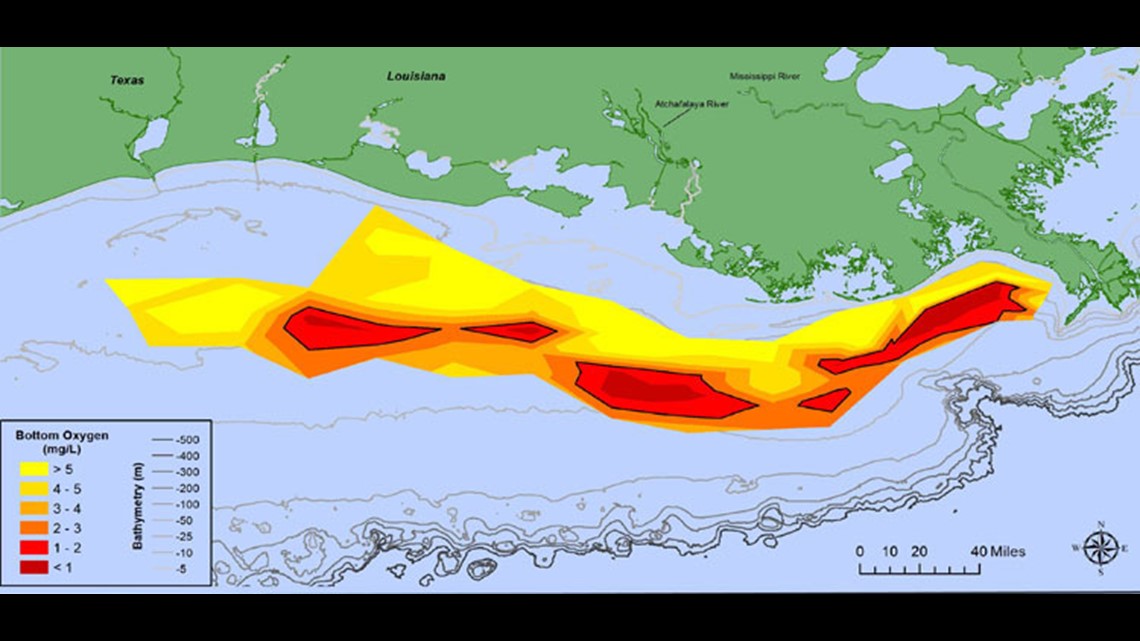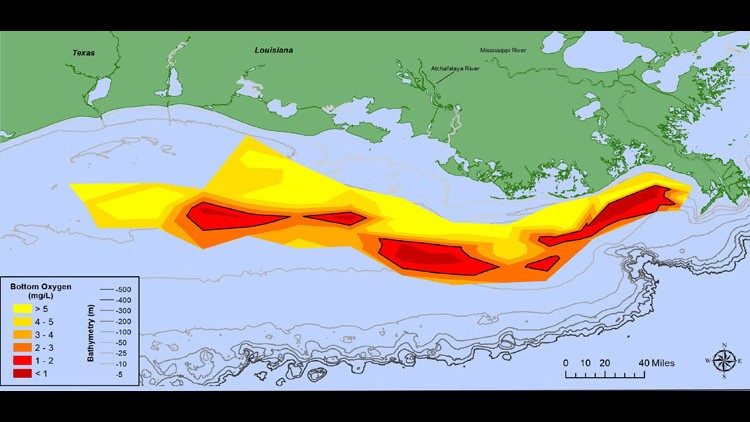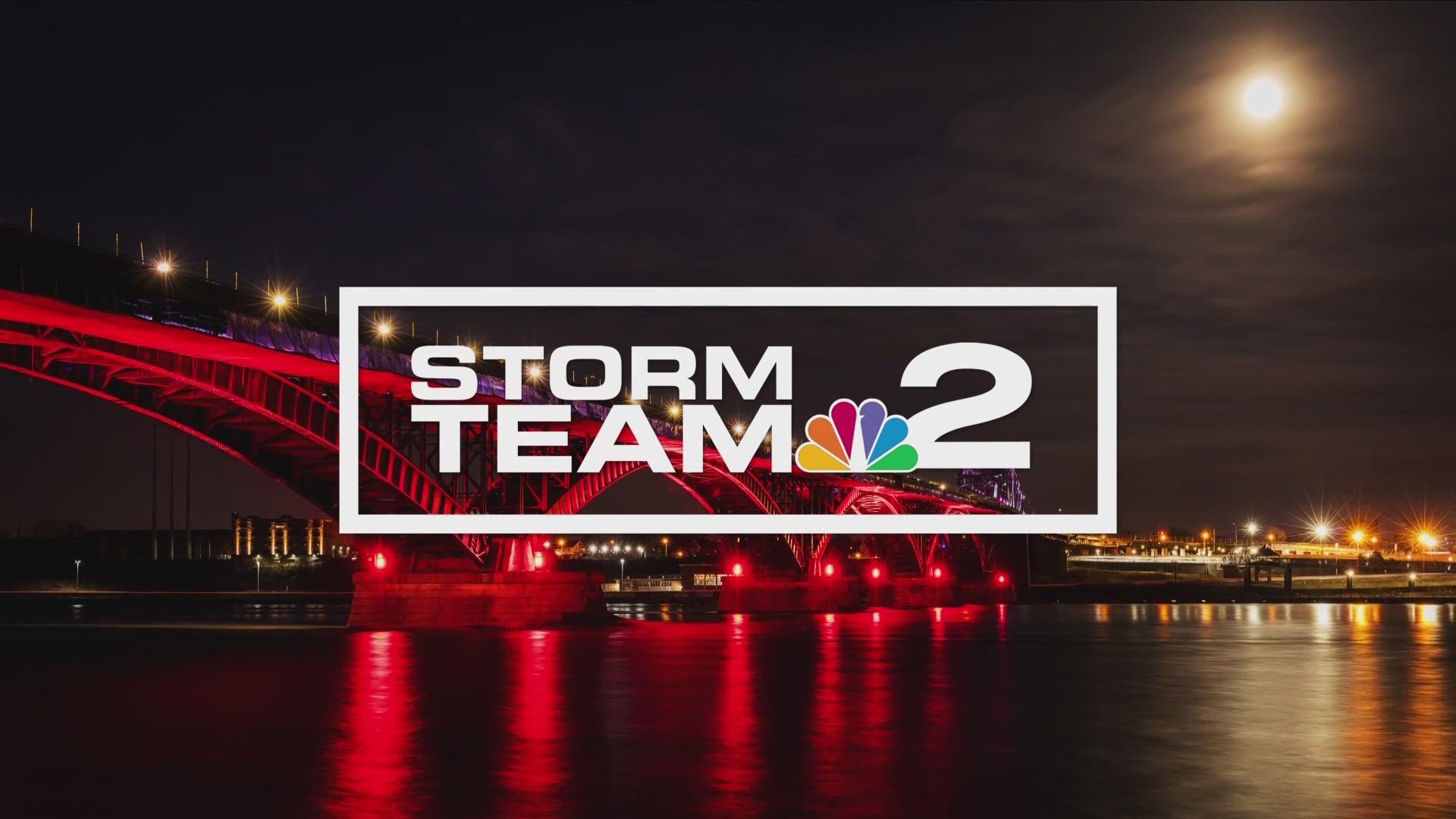BUFFALO, N.Y. — While hurricanes can have a devastating impact to civilization if they make landfall, hurricanes also influence the ecosystems beneath the water.
In early August researches part of NOAA's Hypoxia Task Force went out to survey a specific part of the Gulf of Mexico after Hurricane Hanna. Hanna made landfall on July 25 over Padre Island, Texas at 6 p.m. EDT as a category 1 hurricane with maximum sustained winds of 90 mph. Hanna was the first Atlantic hurricane to make landfall in the continental United States in late July.
After the storm dissipated and there was no inclement weather, researchers went out to survey the Hypoxia Zone, more commonly known as the "Dead Zone." Located off the coast of Louisiana, this part of the Gulf of Mexico is known to have water with such low oxygen content that it can kill fish, marine life, and limit any ecosystem development.
Each year the extent of the Dead Zone can grow or shrink depending on the activity in and around it. The Dead Zone grows as excess nutrients from cities, towns and farmland drain into the Gulf of Mexico from the Mississippi River. These nutrients allow for algae to grow, but oxygen eating bacteria quickly kill the algae which halts any further marine development.
While Hurricane Hanna didn't directly move through the Dead Zone, the storm was able to mix the air and water around its center for hundreds of miles. The result and survey's findings was that hurricane Hanna was able to mix the water in and around the Dead Zone. This allowed for water with higher oxygen content to move in and around the Dead Zone and shrink it's overall size.


With this in mind, researchers are expecting a smaller-than-average Dead Zone, around 2,116 square miles in size. This is almost three times smaller than previous years and the third smallest in 35.
So in this case, hurricane Hanna helped the underwater ecosystems it impacted by mixing the water in and around the Dead Zone and shrinking its size.


